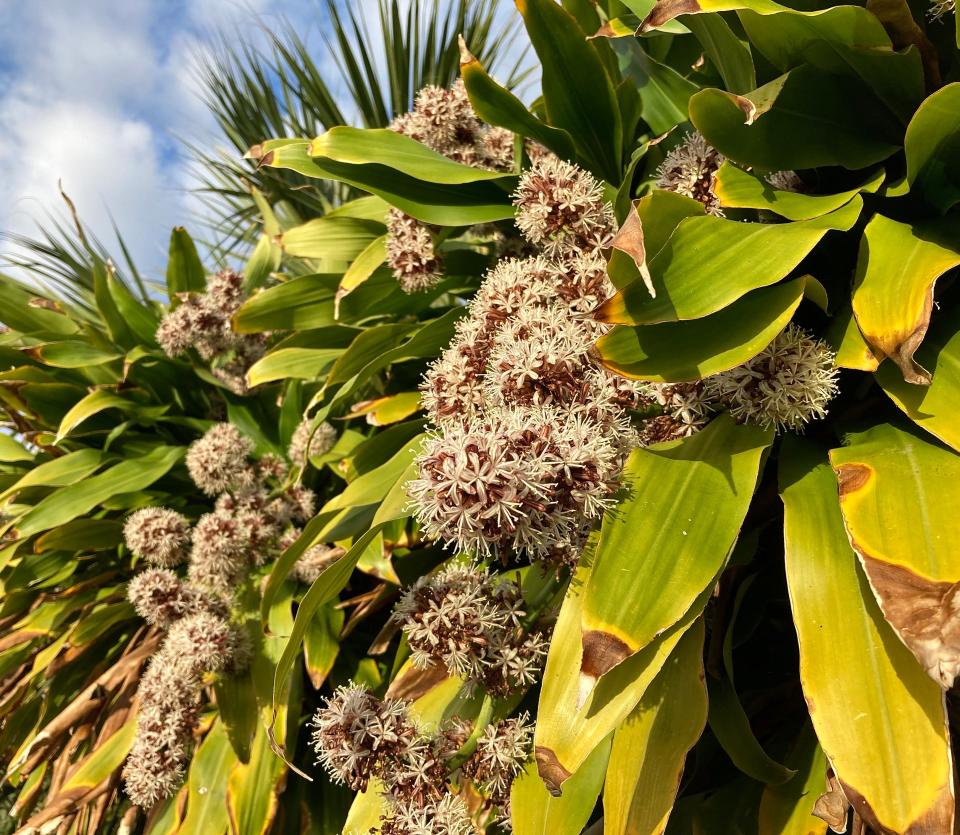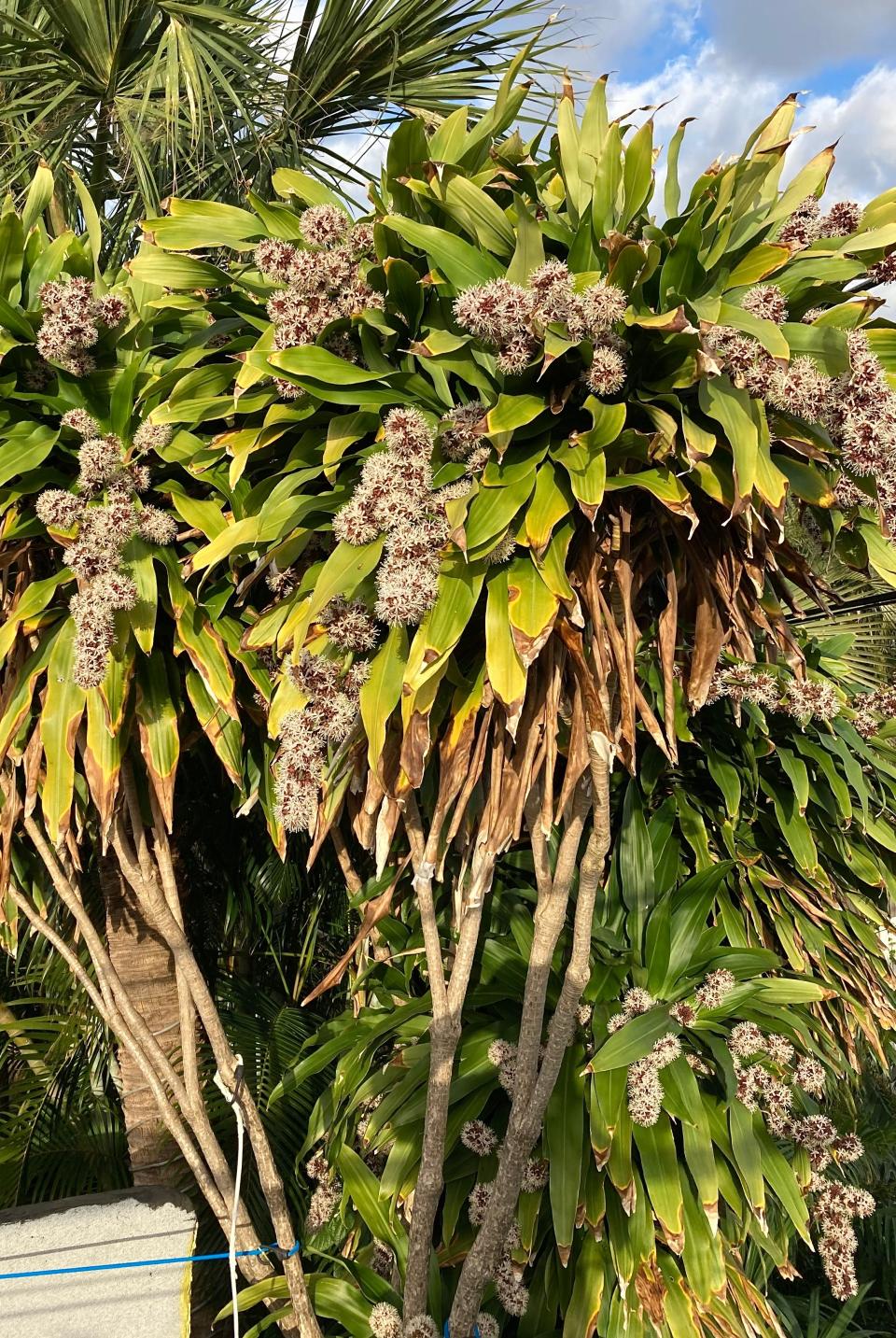Shorter days mean the fragrant dracaena, or corn plant, may be blooming in your neighborhood
A jasmine-like perfume may be wafting through South Florida neighborhoods this time of year as an escaped houseplant explodes with delicate white flowers on long droopy stalks.
The fragrant dracaena (druh-SEE-nuh), whose narrow green leaves and thin trunk earned it the nickname “corn plant," is no native to the Sunshine State.
But like many ecological tourists, it’s taken root in the southernmost reaches of Florida, moving from pot to backyard with ease.
"These are just houseplants really, but they get in our yards because as they grow bigger, people put them outside," said Emily Marois, a residential horticulture extension agent in Palm Beach County who has a corn plant on her property.

The University of Florida notes the corn plant can periodically flower throughout the year, but others have said cooler weather is a key trigger.
Samantha Hudon, the horticulturalist at A One Stop Garden Shop in Loxahatchee, said the corn plant blooms with the combination of cooler temperatures and fewer hours of sunlight.
She sells the plants for between $20 and $50 for interior landscaping and low light areas. Most people don't know that the dracaena will bloom with flowers that carry a strong floral fragrance, she said.
Why you should plant coonti: Once thought extinct, the rare atala butterfly may be in your South Florida yard right now
"It's kind of a secret," Hudon said. "Most people buy it because it's low-maintenance and easy to grow. The bloom is a bonus."
In West Palm Beach, a cool snap in mid-October may have initiated a bloom. Between Oct. 17 and Oct. 23, the average daily temperature as measured at Palm Beach International Airport was up to 11 degrees below normal following the season's first significant cool front.
The corn plant’s nickel-size white flowers emerge from long stems in rosettes like fuzzy dandelions gone to seed. They typically bloom near sunset, releasing a heady aroma that can permeate a neighborhood.
Corn plants are native to tropical regions, such as South America and Africa, but are not considered a harmful invasive species in Florida. Its leaves and flowers are highly toxic to dogs and cats, who can experience lethargy, increased blood pressure, brain hemorrhaging and confusion if they munch on the plants.

Because the corn plant needs little maintenance and is drought-tolerant, it can grow in a wide variety of soil types. It's a popular houseplant that can thrive indoors out of direct sunlight. Depending on how old the plant is, it may bloom indoors.
Outside, the corn plant is more selective in its environment with a planting range confined to the U.S. Department of Agriculture’s zones 10B to 11 — a narrow strip that stretches from central coastal Palm Beach County through the Keys and into the southwest Gulf Coast. In those areas, the corn plant can grow to 15 feet or higher and sprout multiple trunks.
An unmaintained corn plant will accumulate brown leaves that hang down like the dead fronds of a feral palm tree.
Rare perk to climate change: Breadfruit trees were thought to grow only in the Keys but a warming world is changing that
Hudon said the corn plants at A One Stop Garden Shop are all blooming as of mid-November, but Marois said the one in her yard was not in bloom.
Marois did notice that some mango trees at Mounts Botanical Garden in West Palm Beach have bloomed early and will probably lose that crop of fledgling mangoes during the winter months.
She wasn't sure what caused the early mango bloom, but it could be connected to weather patterns this fall, she said. After the cool snap in October, average daily temperatures in West Palm Beach have been slightly above normal through Nov. 22, according to National Weather Service records.
Kimberly Miller is a veteran journalist for The Palm Beach Post, part of the USA Today Network of Florida. She covers real estate and how growth affects South Florida's environment. Subscribe to The Dirt for a weekly real estate roundup. If you have news tips, please send them to kmiller@pbpost.com. Help support our local journalism, subscribe today.
This article originally appeared on Palm Beach Post: This Palm Beach County plant has a strong jasmine-like fragrance blooms in fall

